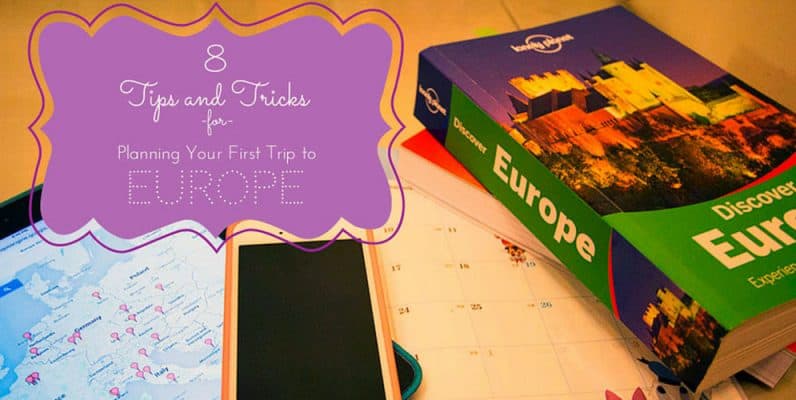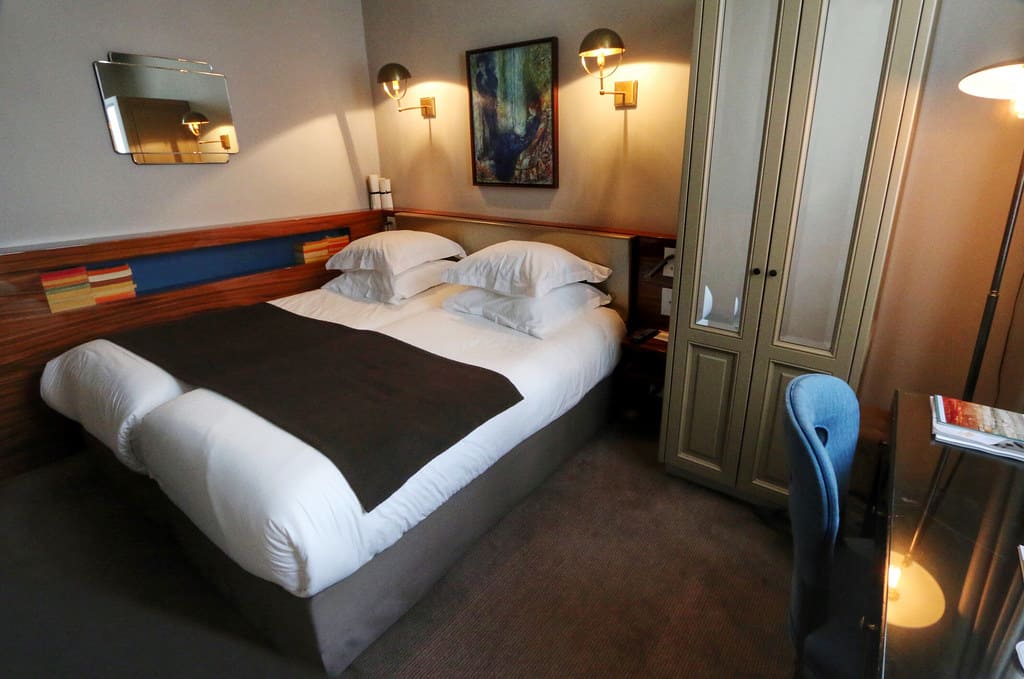Europe
8 TIPS AND TRICKS FOR PLANNING YOUR FIRST TRIP TO EUROPE

If you haven’t heard by now, after spending nearly 3 years in Asia, I’m getting ready to pack my bags and visit my 3rd continent– Europe!
You have no idea how excited I am. I’ve always thought Europe, particularly France, would be the first place I would travel to, especially after spending three years learning French! Now I will finally make this childhood dream come true by traveling around Europe this summer.
To be totally honest here, planning a trip through Europe is nothing like I’ve ever planned before, and it’s quite the daunting task. Figuring out how to get from one city to another, booking hotels and activities, it all became a bit overwhelming, and fast. Not to mention the shell shock of the prices in Europe! Wow, have I been spoiled living in Asia for these past years.
A lot of hotels I’ve been looking at charge €80 just for a really basic room. €80!! That’s enough for me to fly roundtrip to Thailand from here in Hong Kong. And then the train and bus tickets? Oy vey, don’t even get me started.
While most of my planning is now done (thankfully), now I’m just in the stage of finalizing and purchasing. At least along the way I was able to figure out some great tips on how to plan a trip through Europe– tips I wish I had previously known before jumping in without a clue!
Here are 8 tips for planning your first trip to Europe
1. Make a list of everything you know you want to do and see
Maybe you’ve always dreamed of taking a Gondola through Venice or skiing in the Swiss Alps. Make a list, starting with a few big activities to design your trip around. Knowing what activities you absolutely won’t compromise on makes it a lot easier to plan your trip and figure out destinations.
Need ideas? Check out blogs or backpacking guides to get you started.
If you have absolutely nothing in particular you want to see or maybe you want to see too many things, going on an organized tour might be your best for you. This will usually save some money in the long run and you can often find great last minute deals on pre-planned vacation packages.
2. Figure out what cities you need to be in to do these things
Once you know what you want to see, it’s time to figure out your actual destinations.
Obviously if you want to see the Eiffel Tower you’ll need to head to Paris, but maybe you’re interested in exploring Europe’s best castles. Research the cities that fit your trip’s priorities and mark them down on a map. Google Maps works perfectly for this.
3. Map out the most logical route
Now that you’ve plotted all your destinations on a handy map, it’s time to connect the dots. Try to do so in a way that makes the most sense without a lot of backtracking.
Also, if you’re planning on visiting mostly main cities with only a handful of smaller cities mixed in, you may want to consider doing those smaller cities as day trips so that you return to a main city before continuing on your journey. Travel costs are often cheaper and more convenient when traveling between major cities as opposed to really small towns.
4. Plan your tours, attractions, downtime, etc.
Research other attractions that are available in each city. Look through some travel guides, travel blogs and even tourism board websites. It’s also a great idea to search for seasonal events like festivals or local holidays that you may want to join in on.
If you feel uncomfortable traveling on your own in a new country, you may want to look into some organized tours. Whether you pick just a day-tour around Prague or a complete holiday package to Switzerland, they’re both great options for traveling.
There are plenty of great full-day or even half-day tours in almost every city around the world. Viator and Urban Adventures are some of my favorite websites for getting tour ideas from.
Don’t forget to always allow room for some flexibility in your schedule. While you’re out you might run into a great market or find out about a great day trip that you would have to skip. It’s often these experiences that become the best part of a trip, so be sure to leave some open spaces in your schedule to experience them.
5. Decide how long to spend in each location
Once you’ve planned what attractions you want to visit or what tours you want to take you can easily figure out how long you need to stay in each location for.
If you want to see the Eiffel Tower, visit the Château de Versailles, and experience a day of Bastille Day festivities, you’ll know that you’ll be needing at least three days in Paris… at least.
6. Start booking flights, trains and buses
With a set itinerary in mind, now’s the time to start actually booking your flights, trains and buses.
When most people think of Europe they imagine train travel, but often taking a flight or bus is cheaper and faster. Be sure to consider all options especially before shelling out for an expensive rail pass that you may not get your money’s worth out of. Use sites like Rome2Rio to compare your options– I honestly don’t know what I would do without this site, it has been making my planning so much easier. (Thank you Talon of 1 Dad, 1 Kid, 1 Crazy Adventure for putting me on to this gem!)
Also check the prices of individual tickets for bus or rail before purchasing any sort of pass, as sometimes it’s cheaper to book separately, especially if you book early and snag good deals.
7. Book your accommodation
As your transportation falls into place you’ll begin to know what nights you need to find accommodation for. I know a lot of people like to book accommodation before they figure out their overland travel, but I like taking trains or buses overnight as it saves on needing a hotel, and I won’t know whether that’s possible until booking my transportation.
As I mentioned earlier, hotels in Europe are quite expensive, but there are a lot of other great accommodation options to look into. Hostels, luxury villas, apartment rentals, home-swaps, and couchsurfing are all very popular across Europe.
8. Get excited
You’re going to Europe!!! The most stressful part of planning is now over. Now it’s just up to you to make sure all your documents are in order, create your Europe packing lists and start bragging to all your friends!

